Out of all the amazing experiences you can have across the Falkland Islands, it’s hard to argue that penguin spotting isn’t one of the major crowd pullers!
Boasting populations of 5 penguin species, these amazingly cute birds, who only live in the southern hemisphere, were undoubtedly one of the major reasons I wanted to visit the Falklands too.. and how can you blame me?!
In fact, the tourist trail across these islands (the route most visitors here follow) is even colloquially known as the Penguin Trail by locals and, from the tourism board’s logo to the souvenir merch you can buy here, it really is hard to get away from the fact the Falklands and penguins go hand in hand.
And for good reason!
Many of the islands here boast populations of multiple penguin species and, given how easy and accessible it is to see these marvellous creatures, plus the lack of crowds – meaning you can get pretty close to them (albeit at a respectable distance) – I don’t know of many places on earth where you can have better penguin experiences than the Falklands.
So if you want to know which penguin species can be found on these islands, as well as how, where and when to see them, then read on for the full Falklands lowdown…
Related Posts
- Top 21 Things to Do in the Falkland Islands
- My Amazing 7 Day Visit to the Falklands
- 21 Things to Know Before you Visit the Falklands
Falkland Penguin Species
As I mentioned in the introduction above, one of the most amazing things about the Falkland Islands is that this archipelago boasts populations of 5 penguin species (out of the 18 found globally), making it one of the most concentrated penguin places in the world!
The five species of penguins found in the Falklands are:
- King Penguins
- Gentoo Penguins
- Magellanic Penguins
- Southern Rockhopper Penguins
- Macaroni Penguins
These names might sound strange and unfamiliar at this point, but trust me, if you do plan to visit the Falklands, you’ll soon grow to know them very well!
Having not a clue how to distinguish these species of penguin from one another before I arrived, the names were soon rolling off my tongue by the end of day 2 here!
And that’s because you can easily see different penguins all over the Falkland Islands.
Out in the wild here, there’s no zoos, conservation trusts, barriers or cages to keep the penguins in, nor are they paraded round for visitors on show!
Instead, what you get to see across the Falklands are the penguins going about their everyday business, just as they would whether you were here or not.
Like all of the wildlife spotting you can do on the Falklands, these are authentic, genuine, real and raw animal encounters at their best.
Thanks to the lack of other tourists as well, seeing penguins on the Falkland Islands is not only amazingly accessible and easy, but it’s also wonderfully peaceful and magical.
You honestly feel like you’re getting a private show!
How to Spot Falkland Penguins?
And this “private show” factor is even more real because, very often, you don’t even need a guide to see the penguins!
Scattered about the Falklands archipelago, often the penguins can be spotted using just your own 2 feet or, occasionally, a vehicle.
I’ll go into this more in the sections below, which detail the best places to see each penguin species, but the short hand answer for now is that, if you’re on a larger island (like West Falkland, East Falkland or Pebble), you’ll probably need a rental car or tour to see the penguins, but if you’re on a smaller island (like Bleaker or Sea Lion), you can likely just walk to see them.
To learn about renting a car in the Falklands, check out this post I wrote.
To find tour companies that offer day tours to various penguin spots, check out this recommended list from Falkland Tourism.
When to Spot Penguins in the Falklands?
But of course, to get the best penguin experience, you’ll want to make sure you visit the Falklands at the right time of year.
And that’s because many of these fish-eating penguins spend vast amounts of time at sea, really only returning to dry land for extended periods of time to mate, nest, rear their young and malt.
Given this, the best time to visit to see the Falkland penguins is during the islands’ spring / summer season, which runs from November to February.
Thankfully, this is also the time of year the Falklands see their most settled weather, meaning November through February are also the most pleasant travel months and when the least disruption to flights and travel services occur here.
After all, don’t forget this is the south Atlantic, so weather plays a big part in how smoothly life operates!
The penguins that seasonally visit the Falkland Islands are:
- Southern Rockhopper Penguins
- Macaroni Penguins
- Magellanic Penguins
These species generally return to the same areas on the islands to build their nests, as well as hatch and raise their young, so visit at the right months and you can easily find them.
The penguins that don’t spend several months of at sea, and instead reside across the Falklands year round are:
- King Penguins
- Gentoo Penguins
These species can be seen whatever time of year you visit the Falklands, although again, there’s likely to be more of them about between November and February.
Learn more about each of these species, including where to see them below…
#1 King Penguins
Aptenodytes patagonicus
If you want to see a classic p-p-p-p-penguin (particularly if you’re British and had one of these chocolate bars in your lunchbox every day as a kid…. nope just me then!), the King Penguins are the archetypal image you’ll have in your brain.
Tall, regal and majestic looking, these are the largest of the Falkland penguin species and it’s easy to see how they get their name!
Their distinct and bright orange ear patches, which extend to their chest and beak, and their upright walk, further add to their flair, stature and grandeur.
Growing to 90cm tall, Kings are the 2nd largest penguin species in the world and the Falklands mark the northern edge of their global range.
The largest breeding penguin across the archipelago, incubating King penguin adults carry their egg on their feet and typically raise 2 chicks every 3 years.
The young are born with a brown, fluffy coat they shed after almost a year (around October and November), but even as adults, these penguins malt.
When they do, they can see seen away from the main colony, keeping themselves separate as they lose massive amounts of feathers.
Needless to say that young and malting King Penguins should not be approached, as they are sensitive and vulnerable at these. Avoid taking close pictures or making loud noises around them.
When to See Them
King penguin do not migrate, but stay close to coastal breeding grounds, so you can see them all year round in the Falklands, although January and February are the best months for hatching chicks sightings.
It’s estimated 500-700 chicks are born each year on the Falklands.
Between April and August, you will see less King penguins, as the adults are away from their chicks for long stretches at sea – conditions at this time mean they have to travel further for food and have been known to forage 100 miles away from the colony.
Where to See Them
The largest and most accessible colony of King penguins on the Falklands is at Volunteer Point on East Falkland.
Here there’s an estimated 1500 breeding pairs.
I also saw King penguins (although just a couple) on Sea Lion Island.
How to See Them
You’ll need to take a tour to Volunteer Point as the penguins here are on private land and there is a lot of heavy-duty 4wd action to travel there.
Day tours from Stanley are the best option.
The drive to Volunteer Point and back takes around 6 hours return, so expect to have about 2 hours to spend with the King penguins.
Learn more in this post I wrote.
#2 Gentoo Penguins
Pygoscelis papua
Second in size to the King penguins on the Falklands, Gentoo penguins reach an average height of 75cm.
They are a resident Falkland penguin throughout the year and there’s around 85 breeding colonies here – including 32 on West Falkland and 36 on East Falkland.
In 2012, the Falkland Islands held the largest breeding populations of Gentoo penguins in the world!
Living in colonies up to 3km inland, the Gentoo’s distinctive waddle to and from the sea, (which seems pretty constant all day!) makes them a favourite with wildlife watchers.
Routes between the colony and the sea remain the same and are colloquially known as the Penguin Highways – and once you see these busy penguins in action, it’s easy to understand why!
Rush hour in the summer months is early evening, just before sunset, when many of the Gentoo return from foraging at sea just before dark.
Nesting sites also remain the same annually and are easy to visit. Most contain several hundred breeding pairs.
Gentoo are distinguished by a white bar over the crown of their head, as well as a white tummy and orange feet.
Their average weight is between 5 and 8kg, with males weighing slightly more than females.
Gentoo are inshore foragers, so don’t venture far for food.
Young engage in “chick chasing” as a means to get subsistence from adults returning from sea.
When to See Them
Gentoo penguins do not migrate, but stay close to coastal breeding grounds, so you can see them all year round on the Falklands, although December and January are best for seeing hatching chicks.
Nest building starts in September, eggs are laid in October and begin hatching in November / December.
The young form small creches by January are often found waiting on the beaches for their parents to return with food.
By February, the young are fully moulted and ready to also go out to sea for food by March.
Where to See Them
There are over 80 breeding sites of Gentoo penguins along the coastline of the Falklands.
I saw them at Hill Cove, as well as on Pebble and Sea Lion Islands.
You can also see them on Bleaker, Weddell and Saunders.
My most special Gentoo moment however, had to be at Yorke Bay on East Falkland at sunset.
Don’t miss this experience!
Learn more here.
How to See Them
On Pebble Island and at Hill Cove, you’ll need to take 4wd tours to see the Gentoo.
On Sea Lion Island and Bleaker you can walk to their colonies.
To access Yorke Bay at sunset, it’s best to go with a guide from Stanley.
#3 Magellanic Penguins
Spheniscus magellanicus
A summer resident on the Falkland Islands, Magellanic penguins are named after Portuguese explorer Ferdinand Magellan, who spotted the birds in 1520.
known for their black body and white belly – a countershading, which helps it avoid predators while swimming – Magellanic penguins also have distinctive pink skin around the eyes.
They are also very easily distinguished by their nesting habits, as they burrow in the peat on the slopes facing the coastline.
Burrows are up to 2m deep and slope downwards to keep rainwater away from the laid eggs.
Magellanic are very shy animals and quite skittish, and often freeze or rush back to their burrows at the slightest noise!
Growing up to 66cm tall and weighing up to 7kg, they are colloquially known as Jackass, because of their loud braying call and are now listed as vulnerable by conservationists.
When to See Them
You can see Magellanic penguins on the Falkland Islands in the summer months from September to April, when they are breeding in colonies and nesting in their burrows.
Eggs are laid in October or November, young fledged by February, and by April the colonies have dispersed again for the winter – they can travel as far north as southern Brazil looking for food!
Where to See Them
There are estimated to be about 100,000 pairs of Magellanic penguins across the Falklands.
I saw them on Pebble and Sea Lion Islands.
You can also see them on Bleaker, Carcass and Saunders.
How to See Them
On Pebble Island, you’ll need to take 4WD tours to see the Magellanic penguins.
On Sea Lion Island and Bleaker you can walk to their colonies – just make sure not to stand in the burrows, as they are often hidden among the tussock grass.
#4 Southern Rockhopper Penguins
Eudyptes chrysocome
Marked as a vulnerable, the Southern Rockhoppers can be seen across several islands on the Falklands and most visitors instantly fall in love with the cheeky and curious character, not to mention their wild yellow brows and plumes, plus red eyes, which give them a very distinctive look!
The smallest of the penguins species found across the Falklands, these guys grow to just 60cm tall, but this makes them adept at navigating the rocks cliffs where they nest and breed between September and April.
Their distinctive name comes from the 2 footed hop they use to move around the steep cliff areas – it’s both hilarious and super cute to watch!
Thought to be one species until 2006, it was then decided that Southern Rockhoppers and Northern Rockhoppers were actually 2 different species, and the global penguin species count increased from 17 to 18 as a result.
In the Falklands, it’s the Southern Rockhoppers that can be seen – they are one of the 2 crested penguins species found on the islands.
With a life expectancy of around 13 years in the wild, they start breeding from age 4 and tend to lay 2 eggs, with the second egg being larger and heavier than the first.
When to See Them
Southern Rockhopper penguins can only been seen on the Falklands between September and April.
The males arrive first and eggs are laid in November, hatched in December and then the young are creched in January and February.
In March, there’s often fewer numbers of Rockhoppers around, as adults are away foraging for food for extended periods, before they return to moult in April and then head away for the winter months.
Where to See Them
I saw Rockhopper penguins on Pebble Island, Sea Lion Island and at Hill Cove on West Falkland.
They can also be spotted on Bleaker Island, the Jason Islands and Beauchene Island among others – there’s 35 colonies across the Falklands archipelago.
How to See Them
On Pebble Island you’ll need take a tour with lodge owner Riki to find the colonies and at Hill Cove hop on a tour with Peter who runs Boxwood Pod here..
Learn more in this article I wrote about Pebble Island and this one about Hill Cove.
On Sea Lion Island you can walk to see the Rockhoppers from the lodge if it’s not too windy!
#5 Macaroni Penguins
Eudyptes chrysolophus
Like the Southern Rockhoppers, the Macaroni penguins are crested.
In fact, they look quite similar and can often be spotted together on steep, rocky, clifftops.
The easiest way to tell Rockhopper and Macaroni apart, is that the Macaroni penguin are slightly larger.
There’s not many of these on the Falklands (they are actually the least common here with only around 24 pairs), but often single pairs can be spotted within larger Rockhopper colonies, so keep your eyes peeled!
Inter-breeding between the 2 species is not unknown.
Macaroni penguins are migratory, so only visit the Falkland Islands during the summer and begin breeding around 5 years old.
Living up for up 15 years in the wild, their main predators are sea lions in the water.
On land, Skuas and Caracaras (both large birds) can take small chicks.
In turn, the Macaroni eat squid, lobster krill and other small fish.
When to See Them
Macaroni penguins can only been seen on the Falklands between September and April.
Two white eggs are laid in November, hatched in December and moulting runs from mid Jan through to March.
By April, the Macaroni have departed for the winter.
Where to See Them
I saw Macaroni penguins on Pebble Island and Sea Lion Island, but look out for them wherever you spot Southern Rockhoppers.
How to See Them
On Pebble Island, take a tour with lodge owner Riki to find the colonies – learn more in this article I wrote about Pebble Island.
On Sea Lion Island you can walk to see them from the lodge if it’s not too windy – learn more here.
Mini Travel Guide to the Falkland Islands
When to Visit the Falklands?
It’s best to visit the Falkland Islands during the spring and summer season, which runs from November to February.
How Long to Spend in the Falklands?
I recommend 7-14 days across the archipelago.
How to Get There?
Check out this article I wrote all about flying to the Falkland Islands.
Recommended Falkland Island Tours
If you’re keen to travel to the Falkland Islands, check out these amazing tours!
Top 5 Packing Items for the Falklands
Learn more in this complete Falklands packing list I put together.
Travel Insurance
World Nomads offers simple and flexible travel insurance. Buy at home or while travelling and claim online from anywhere in the world.
Alternatively, if you’re a long-term traveller, digital nomad or frequent remote worker seeking travel health cover, check out Safetywing’s Nomad Insurance policies.
Travel Money
There’s only 1 bank in the Falklands, in Stanley, so it pays to have some British cash on you, as well as a debit and credit card.
Most island lodges allow you to pay on card, which is what I did, using my Wise card.
The easy way to spend abroad with real exchange rates, no markups and no sneaky transaction fees, my Wise card works just like a debit card and it links easily with Google and Apple pay. Grab yours here.
PIN IT TO PINTEREST!
So there you have it, my full travel guide to the Falkland penguins, including which species you can see here, when to spot them, where to find them and how to go about getting to their colonies.
Hope the info was helpful, and I’ve convinced you to visit this amazing wildlife archipelago.
Still have questions about travelling in the Falklands?
Don’t hesitate to drop them into the comments box below and I’ll get back to you…
My trip to the Falkland Islands was kindly sponsored by Falkland Island tourism but, as always, all views are my own.
This page contains affiliate links meaning Big World Small Pockets may receive a small commission on any purchases at no extra cost to you.
Just enter your details below and I'll email it you - simple!
Information will be sent to the email provided above

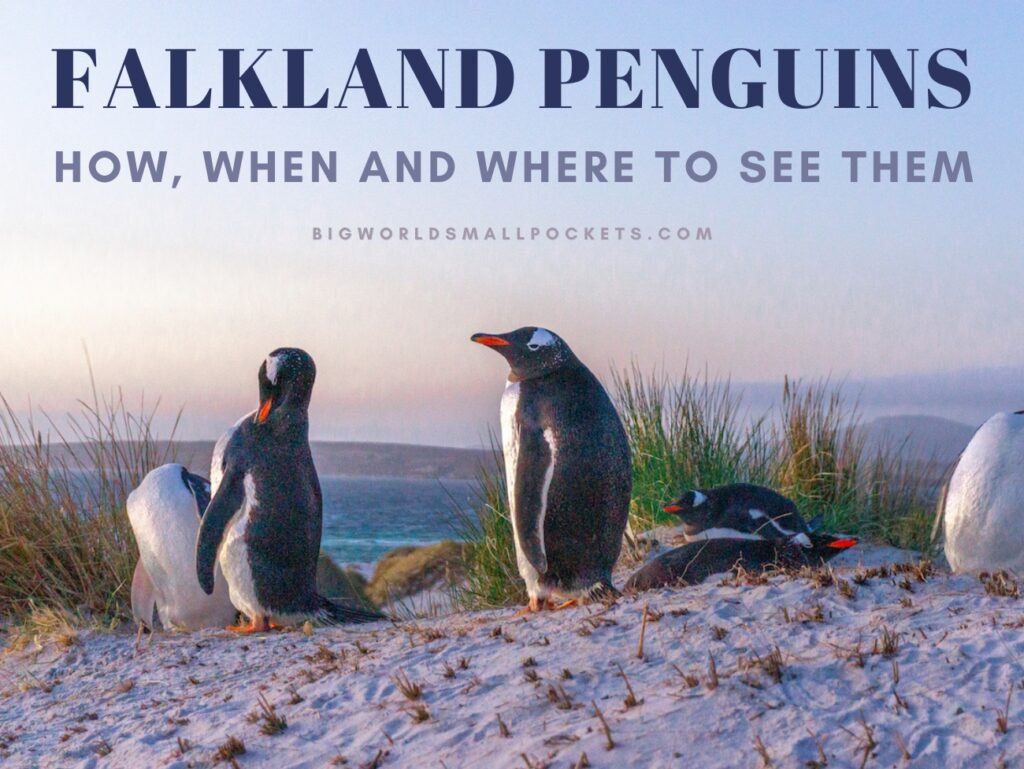
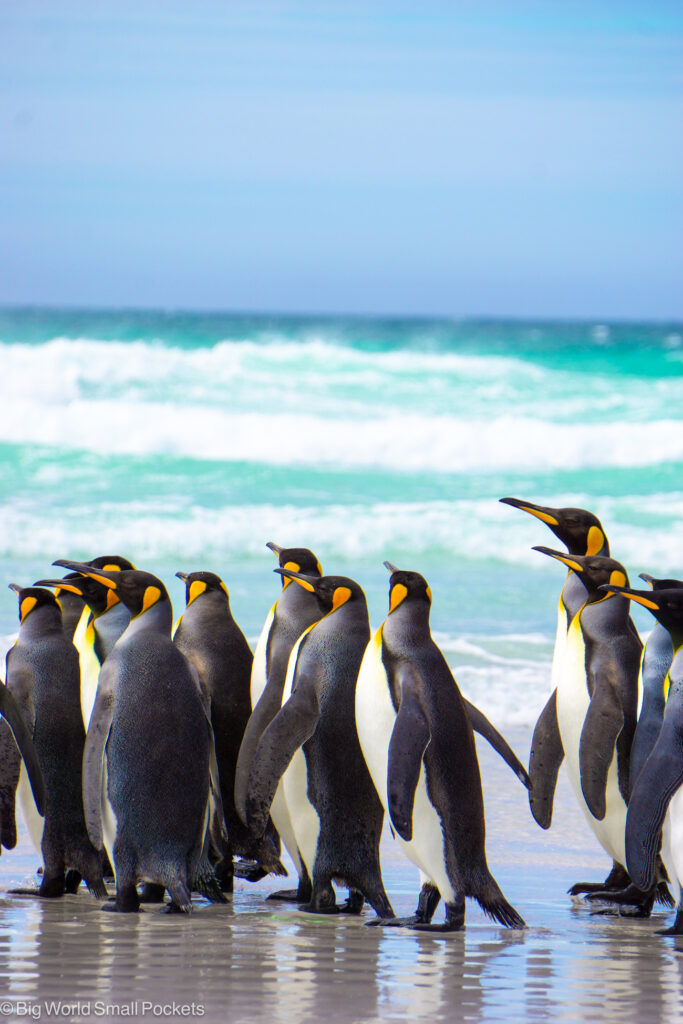
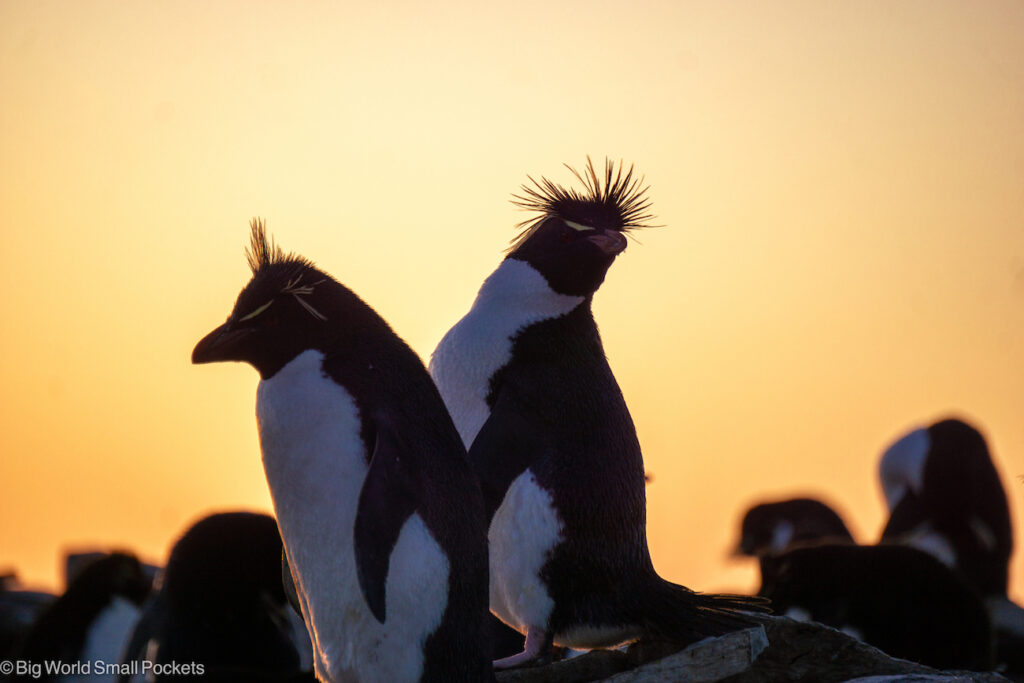
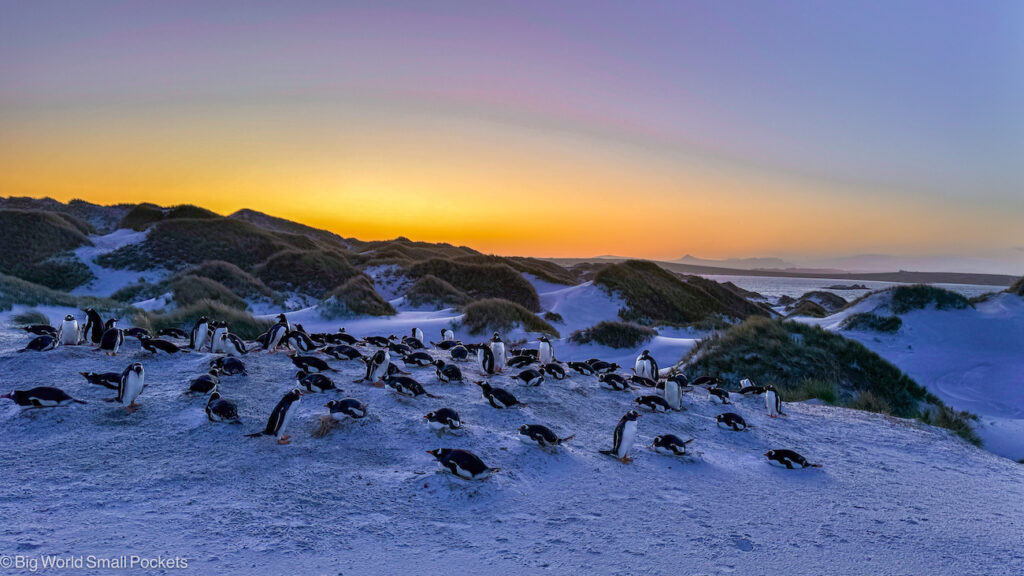
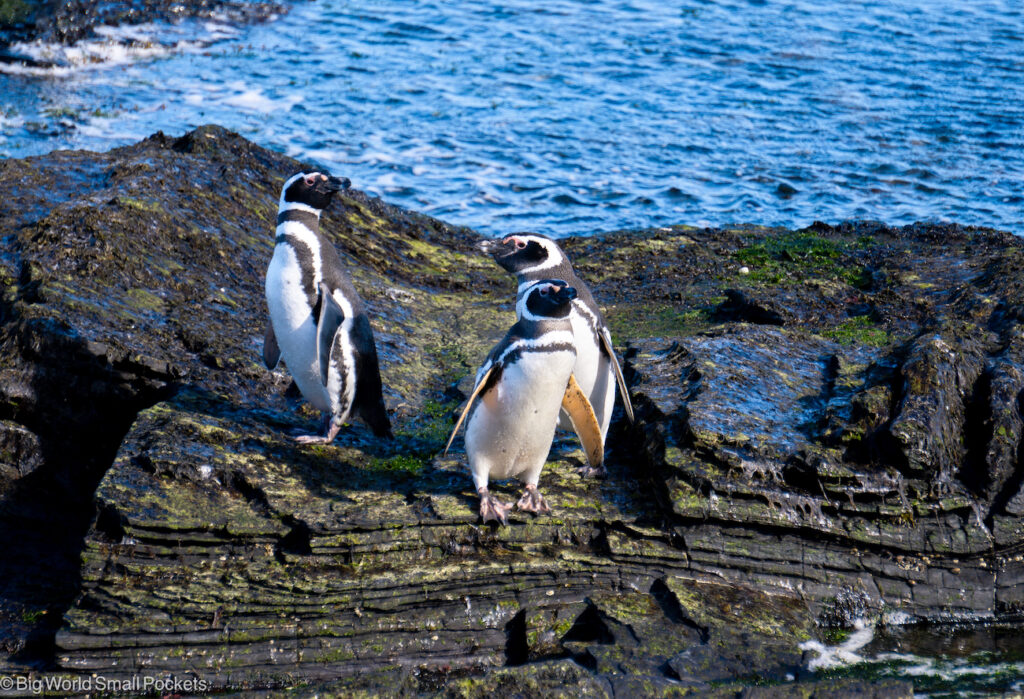
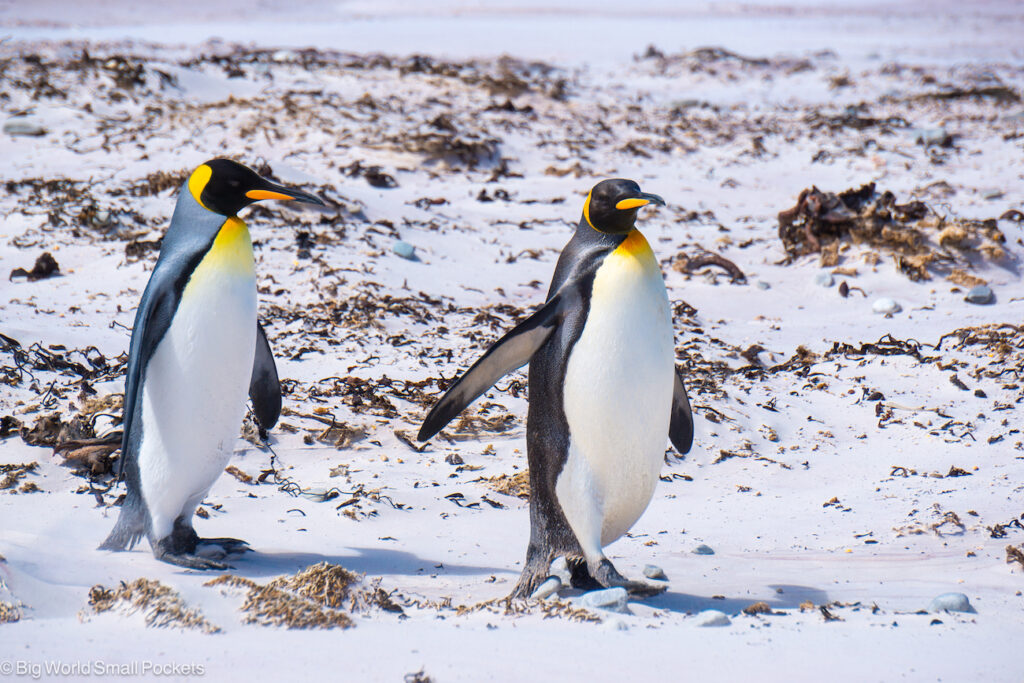
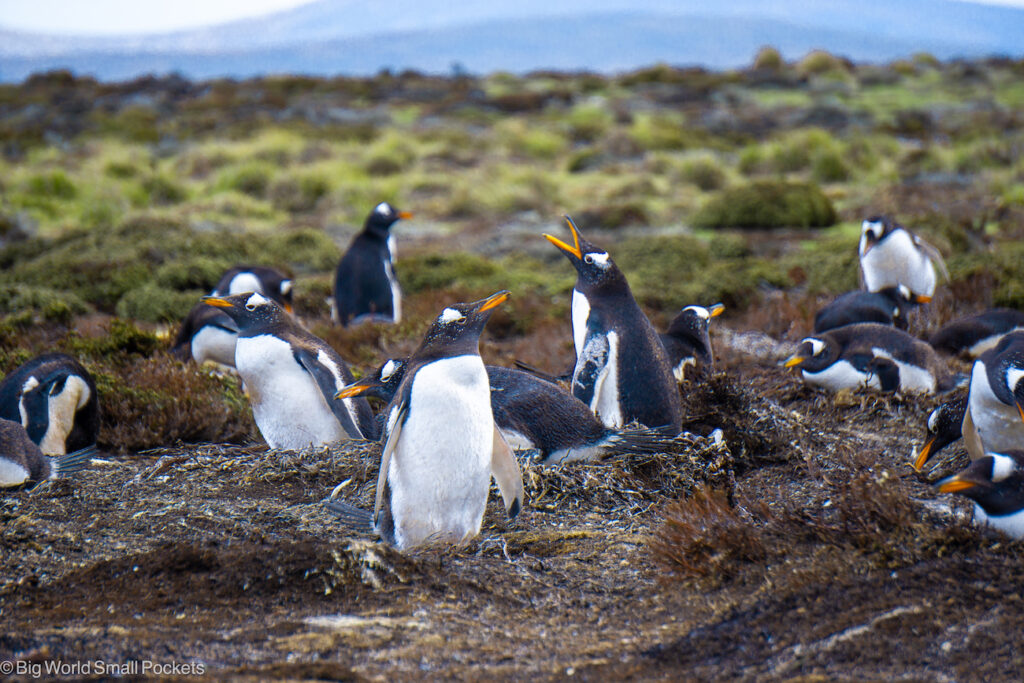
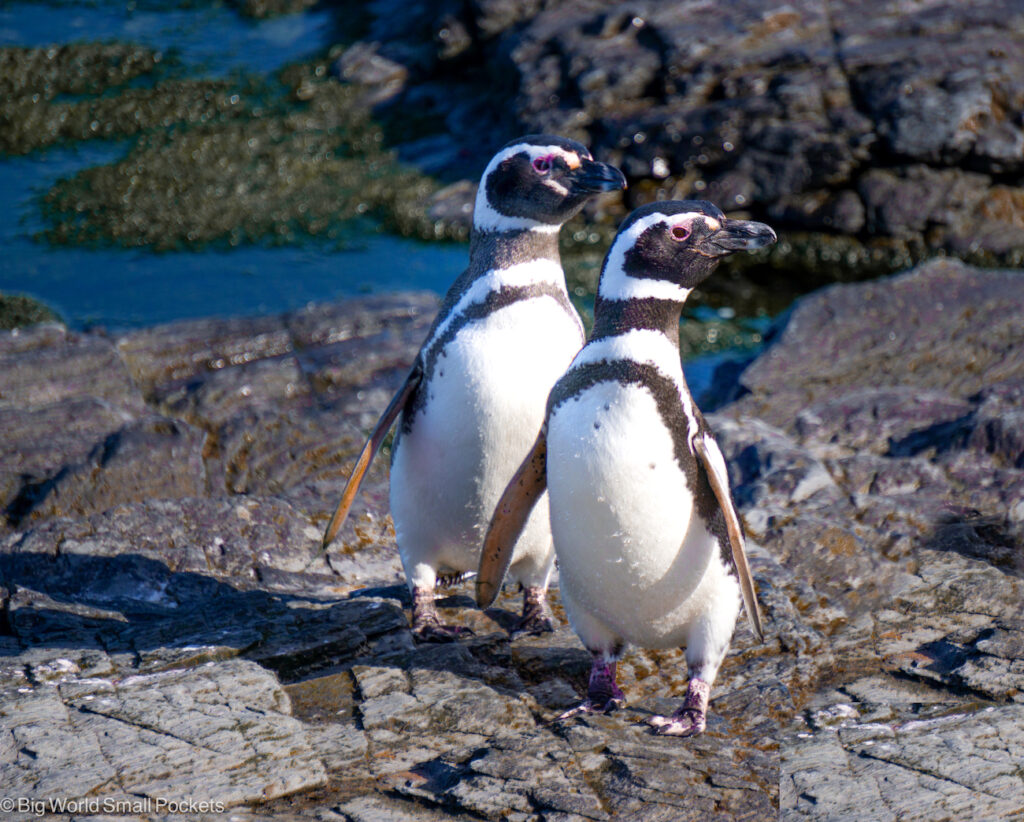
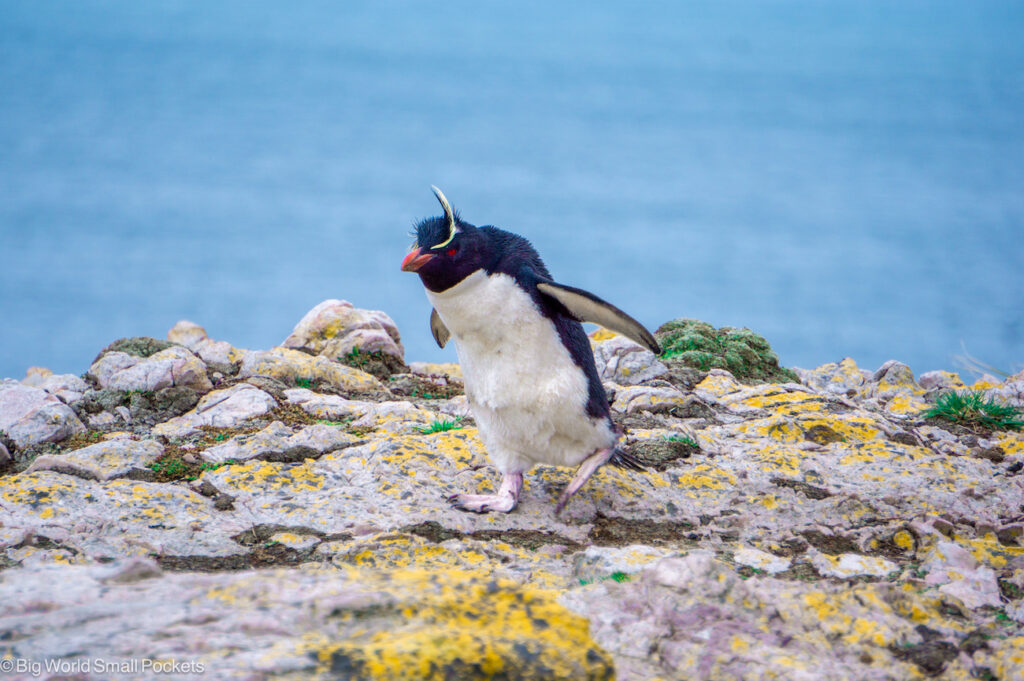
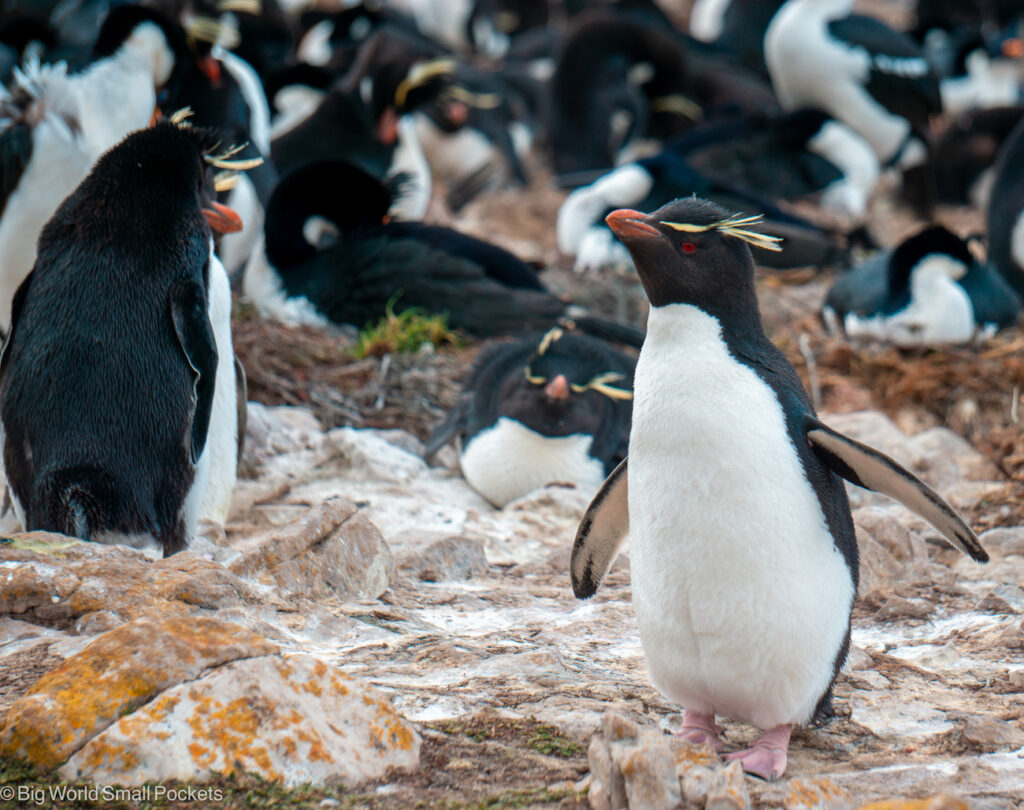
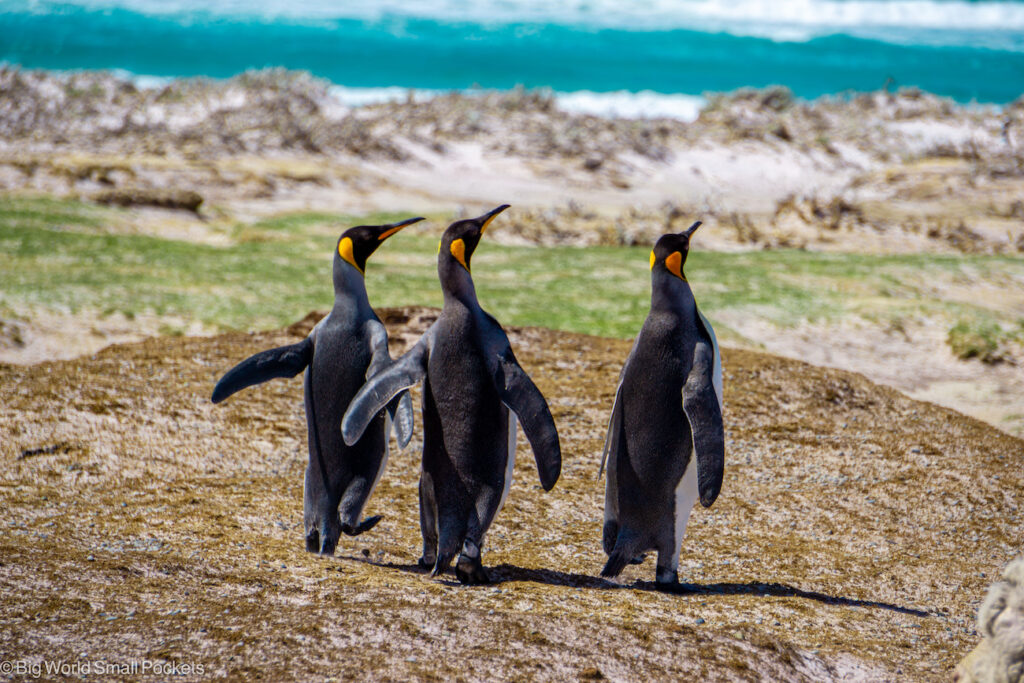
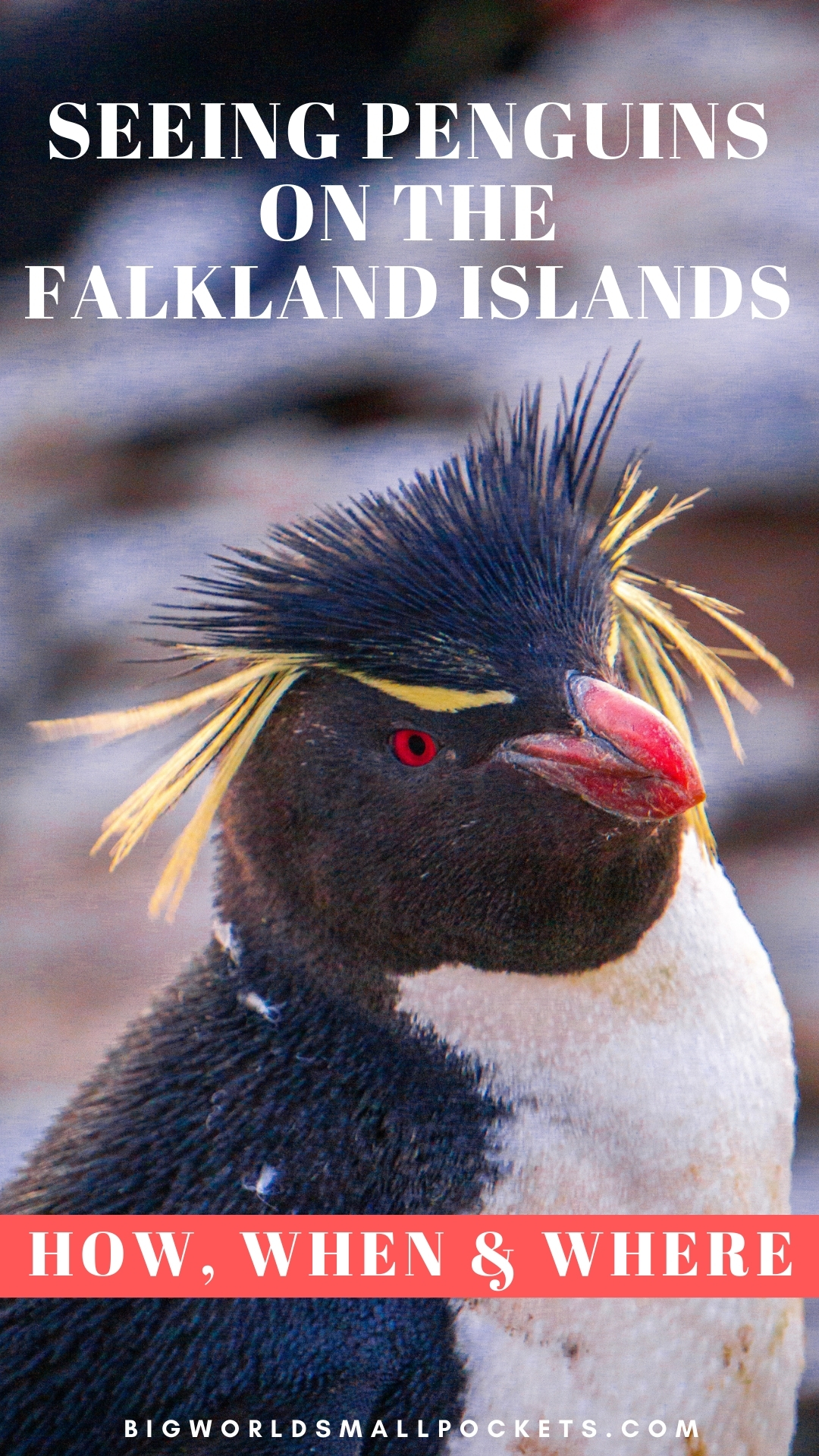
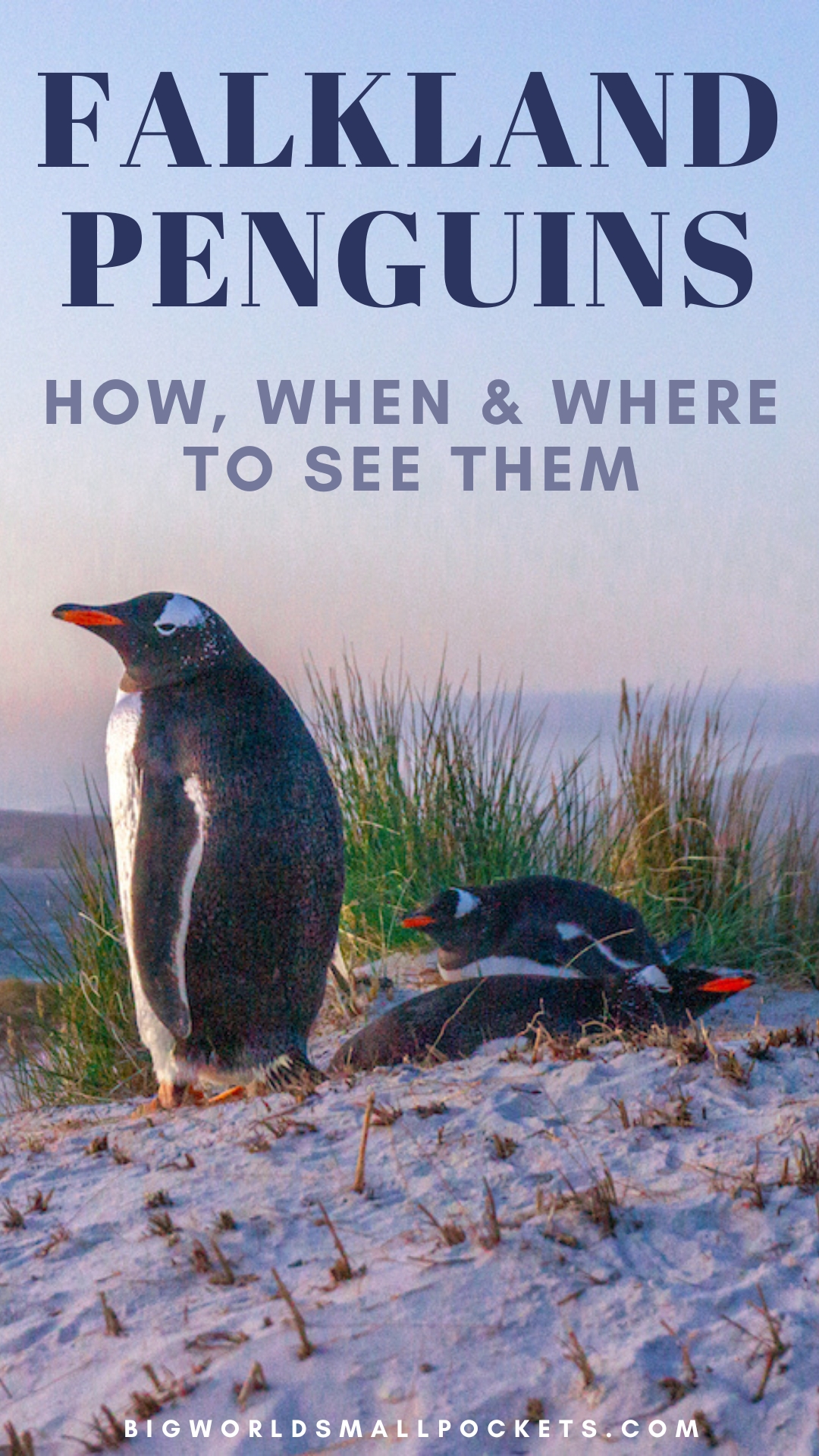
It’s worth mentioning, Steph, that there are occasional vagrant species – I’ve seen a solitary chinstrap penguin on Saunders Island.
Interesting Wayne, didn’t know this! Thanks for the intel. Best wishes, Steph 🙂